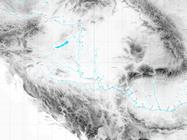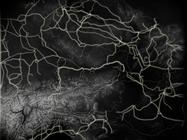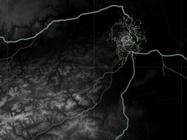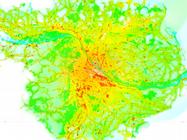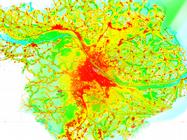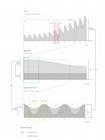01 von 01
|
Vorherige Abschlussarbeit nicht möglich (Anfang erreicht)
|
Nächste Abschlussarbeit nicht möglich (Ende erreicht)
geb. 1985
Institut für Kunst und Architektur
Masterstudium; Architektur
Betreuung: Seraji, Nasrine
Institut für Kunst und Architektur
Masterstudium; Architektur
Betreuung: Seraji, Nasrine
Tracing Footsteps: The Dynamic Ecological Footprint,
2010
Abschlussjahr: 2010
The language of sustainability is now part of our everyday lives. Yet the understanding of environmental issues and acting towards a more sustainable future is mostly a consequence of fear and implanted guilt.
Contemporary environmental study reports, in spite of the fact that they use new and accurate research methods, go hand-in-hand with that trend. The central reference to all the assessments such as “Ecological Footprint Calculation” is one’s lifestyle, making us as individuals directly accountable for the terrifying conclusions that such surveys reveal. The evoked blame results in applying a set of sustainability stereotypes, all of which promote reduction and not relying on large-scale infrastructure. It has become a commonplace to pursue a form of independence as a response to environmental threats.
The discipline of architecture has the ability to operate in the realm in which all the environmental issues can be addressed in a rational manner and in an appropriate scale. However, the results of tackling these issues are too often found only in designing green roofs, building thicker walls and simply accommodating alternative lifestyles.
The aim of the project is to address the pressuring environmental issues and our impact on the planet through the essence of the problem, that is to say, through the built environment and infrastructural systems that enable us to exploit the Earth and extend Ecological Footprints beyond the point of prudence. The predominant reference therefore is not the lifestyle but the city and its context.
By visualizing the extent of several subsets of one’s Ecological Footprint, the city is revealed not as an enclosed entity operating within its boundaries, but as a complex construct of infrastructural networks and configurations constantly influenced by the natural environment.
Internal dynamics of cities (our energy and water consumption, traffic rhythms etc.) and environmental dynamics (global water cycles, carbon cycles etc.) shape a phenomenon of complex interdependencies in which one continuously informs the other. Inhabiting a city therefore turns into acting on specific and sometimes distant territories at specific times. By representing these urban and natural sites and its dynamics, the project places one’s environmental impact in the actual context and reveals dependencies and interaction between parameters of natural and urban environment.
Contemporary environmental study reports, in spite of the fact that they use new and accurate research methods, go hand-in-hand with that trend. The central reference to all the assessments such as “Ecological Footprint Calculation” is one’s lifestyle, making us as individuals directly accountable for the terrifying conclusions that such surveys reveal. The evoked blame results in applying a set of sustainability stereotypes, all of which promote reduction and not relying on large-scale infrastructure. It has become a commonplace to pursue a form of independence as a response to environmental threats.
The discipline of architecture has the ability to operate in the realm in which all the environmental issues can be addressed in a rational manner and in an appropriate scale. However, the results of tackling these issues are too often found only in designing green roofs, building thicker walls and simply accommodating alternative lifestyles.
The aim of the project is to address the pressuring environmental issues and our impact on the planet through the essence of the problem, that is to say, through the built environment and infrastructural systems that enable us to exploit the Earth and extend Ecological Footprints beyond the point of prudence. The predominant reference therefore is not the lifestyle but the city and its context.
By visualizing the extent of several subsets of one’s Ecological Footprint, the city is revealed not as an enclosed entity operating within its boundaries, but as a complex construct of infrastructural networks and configurations constantly influenced by the natural environment.
Internal dynamics of cities (our energy and water consumption, traffic rhythms etc.) and environmental dynamics (global water cycles, carbon cycles etc.) shape a phenomenon of complex interdependencies in which one continuously informs the other. Inhabiting a city therefore turns into acting on specific and sometimes distant territories at specific times. By representing these urban and natural sites and its dynamics, the project places one’s environmental impact in the actual context and reveals dependencies and interaction between parameters of natural and urban environment.
Dank an Berthold Gilbert, Willheim Georg, Smilga Dagnija, Werschnig Johanna, Soeparno Philipp, Lenart Christina, Balcinovic Adnan, Stöger David, Aursulesei Stefan, Weidacher Max & Weber Barbara
